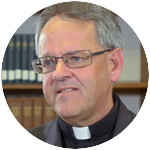
Father Thomas Dailey, O.S.F.S.
The numbers tell a previously unthinkable tale.
A Gallup poll notes that, amid a sharp downturn in religious affiliation, “the decline in church membership has been greater among Catholics. Twenty years ago, 76% of Catholics belonged to a church; now, 63% do.”
The Center for Applied Research in the Apostolate (CARA) reports that the Catholic Church now operates close to 1,500 fewer parishes nationally than it did in 1971. That news hits even closer to home when one realizes that the largest reduction of parishes has taken place in Pennsylvania (down 532 since 1971).
For folks in this archdiocese, that’s a tough pill to swallow. After all, Philadelphia is the home to two saints (John Neumann and Katherine Drexel). The Catholic parochial school system began here. And old-timers remember when you identified your home neighborhood by naming the local parish — even if you weren’t a Catholic!
[hotblock]
Those days are gone. Today’s exigencies necessitate the merger of multiple parishes or the closing of church buildings and their relegation to non-religious uses.
Locals might take some consolation in the fact that elsewhere in the country Catholic churches are opening. According to CARA, “The pattern in parish losses and gains follows economic and social mobility changes in the country more generally.” Still, the empty pews on Sundays make for a sad sight and portend a dismal future for the church.
This is not a recent phenomenon. As the research shows, the numbers have been dwindling for decades.
It should come as no surprise that the ongoing decline in the birthrate has led to fewer baptisms, which then leads to fewer school enrollments, fewer sacraments administered (confirmations and first Communions and marriages), fewer clergy ordained, and less of everything in terms of participating in and supporting the life of a parish.
What may be more surprising is the seeming exodus of an entire generation. Bishop Robert Barron recently painted a stark picture to his brother bishops when he said that “50% of Catholics 30 years old and younger have left the church” and “one out of six millennials in the U.S. is now a former Catholic.”
No intervening event accounts for this downturn in religious affiliation. The empty pews today show not so much an intentional flight as a passive, drifting away from the faith.
[tower]
For many, the routine of going to church seems simply no longer to be worth it. Perhaps the fact that it has been merely a routine, whether for clergy or congregants, explains the downward trend in affiliation.
Other research, conducted by the Catholic Leadership Institute, suggests what contributes to a positive experience of parish life. Data drawn from more than 600 parishes in 28 (arch)dioceses across North America indicate consistent factors determining whether the lay faithful would recommend their parish to others.
The top drivers include people’s view of their pastor, their experience of Sunday worship (especially the preaching), their felt sense of the parish as a welcoming and accepting community, and their being helped to recognize how God is at work in their life.
Meeting those needs remains a tall order. It may require changing the way things have always been done, especially to attract the millennials.
Parishes tend to operate on a geographical model, with identifiable boundaries and physical locations that once served as rallying points in cities, towns, and neighborhoods. But in social settings no longer delineated by cultural background or circumscribed by means of transportation, that model no longer works as a paradigm of parish membership, especially for the younger, more mobile generation.
Future parishioners may have to travel farther for Mass. Or, perhaps Mass will one day be celebrated “live” in a centralized location and simultaneously telecast to other churches where the local community can participate.
Given the decreasing numbers of clergy and congregants, cutbacks are coming in terms of educational opportunities and social services. Perhaps future parishes will purposefully drop all activities except worship, thereby concentrating resources (material, financial, and human) on the liturgical and sacramental economy of the church.
If we truly want Catholics to “come home,” parishes need to provide a vibrant and engaging experience worth coming to, an experience of God and divine grace that makes going to church the unique encounter that it can and should be.
Then, hopefully, the declining numbers will turn around — when people of all ages realize that what we really seek, what we truly need, what we cannot find or obtain anywhere else is offered to us each time we gather in the pews to worship the Lord.
***
To kick off the new academic year, St. Charles Borromeo Seminary is hosting a discussion of this topic at 7 p.m. on Aug. 27. The event, which will feature viewpoints from seminary professors and the archbishop, is open to the public.
***
Father Dailey is the John Cardinal Foley Chair of Homiletics and Social Communications at St. Charles Borromeo Seminary, Wynnewood, and a research fellow for the Catholic Leadership Institute in Wayne.



Share this story